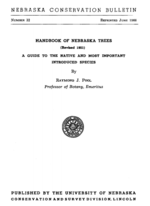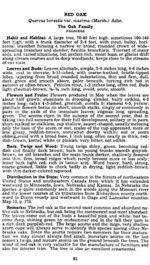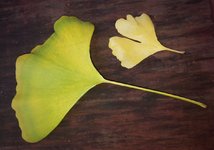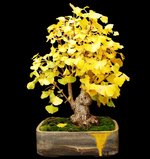I've been going deeper into this list, and want to share my results so far. This is for future people of Nebraska who stumble across this thread and any other Non-Nebraskans who might find it useful.
So when I'm talking about Native Trees, I'm basing what is "Native" off this book
Handbook of Nebraska Trees: A Guide to the Native and Most Important Introduced Species. It was first written in 1919 and updated several times after.
Note: Nebraska lies in USDA Hardiness Zones 4 & 5.


What I learned from browsing that book is that Nebraska is kind of a meeting ground for Eastern and Western trees. Many tree species have entered the state from the Southeast Corner from Missouri and spread north along the Missouri and Platte Rivers. Others come down from the Rocky Mountains and slowly spread East.
During the 1800s Nebraska was an intimidating ocean of grass. Settlers brought trees with them to use for windbreaks, erosion control, fence posts and other agricultural needs.
Arbor Day was created by Nebraska Newspaperman J Sterling Morton in 1872, and more than 1,000,000 trees were planted in Nebraska that day. Although trees are not the first thing people think about when they think about Nebraska, they are critical to life here.
So I cross referenced the book above with the selection of trees from the
Great Plains Nursery, which like I mentioned above I am excited to work with because they grow all their trees from seed in air pruning containers so I suspect they might be growing perfect starters without knowing. Also they're about half price since I can go in person.
The following is a list of "Native" Nebraska Trees that are available at this nursery and I that have a reasonable suspicion might work for bonsai (based on a lot of threads here where
@Leo in N E Illinois dishes out a lot of great info).
Two Trees that are Native to Nebraska but not available at the nursery that should make good bonsai are:
*I have several examples of both I plan to air-layer*
The following is a list of trees that are also available at said nursery that I have a reasonable suspicion might work for bonsai.
And then finally... which trees do I have my sights on? When I take into account suggestions from this thread with inventory levels and cost at the nursery, these are my top 14 choices in no particular order. If I bought one of each it would cost me $350 or so plus maybe another $50 for a new bench to put them on. So I will have to pick and choose maybe five or seven. Seven is a magic number, maybe seven. Seven Trees.
- Eastern Cottonwood (only because it is the State Tree)
- White Oak
- Shingle Oak
- Dwarf Chinkapin Oak
- Red Elm
- White Spruce
- Black Hills Spruce
- Ponderosa Pine
- Red Maple
- Ginkgo
- English Oak
- Bald Cypress
- Princeton American Elm
- Regent Serviceberry
I only looked at the trees while fashioning this list. I will check out their shrub selection for interesting interesting bark & nebari, but I think I will stick with trees unless a shrub really sings to me. I may also ask if they will allow me to take cuttings on some of the species I would like to experiment on that they have but are too large (Ironwood, Hackberry, etc.)
Please take a look at my new and improved list. It should be much easier to read now and there is a lot more information about the trees in the hyperlinks.
For fun, list which 5 species you would pick from these lists?





)
